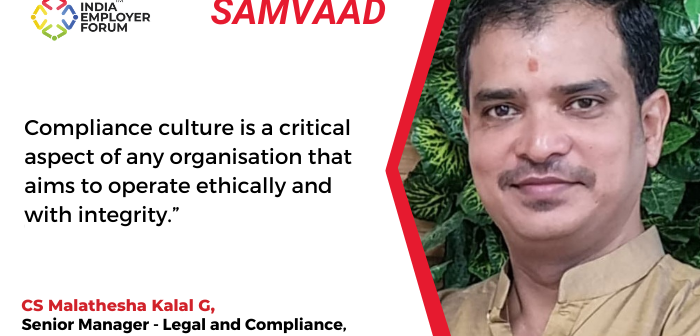What is the regulatory framework for the Aerospace Industry in India?
Regulatory Framework for the Aerospace Industry in India:
Currently, India is one of the fastest-growing markets for civil aviation despite the stress faced by the aviation sector due to the COVID-19 pandemic. India’s domestic traffic makes up more than 65% of the total traffic in the South Asian region. India is the tenth-largest civil aviation market around the globe, and it has been predicted that it will experience exponential growth in the years to come.
The Ministry of Civil Aviation is responsible for formulating national policies and programmes for developing and regulating the civil aviation sector in the country, and the Ministry of Home Affairs is responsible for all security-related policies, including aviation security. In India, the civil aviation sector, as defined under the Foreign Direct Investment (“FDI”) Policy 2020, includes “Airports, Scheduled and Non- Scheduled domestic passenger airlines, Helicopter services/Seaplane services, Ground Handling Services, Maintenance and Repair organisations, Flying training institutes and Technical training institutions”.
The primary legislation governing civil aviation in India is the Aircraft Act, 1937 and the rules made thereunder. The Aircraft Act establishes “control of the manufacture, possession, use, operation, sale, import and export of aircraft and licensing of aerodromes”. The Aircrafts Act grants statutory recognition to the Directorate General of Civil Aviation (“DGCA”), the Bureau of Civil Aviation Security (“BCAS”) and the Aircraft Accidents Investigation Bureau (“AAIB”), which are currently the regulatory bodies working under the Ministry of Civil Aviation and govern and monitor civil aviation in India. Each of these regulatory bodies has its own distinct function and roles and often works hand-in-hand to ensure effective regulation of aircraft and airports in India. The DGCA is the primary body responsible for regulating civil aviation in India and enforcing airworthiness and air safety standards as prescribed under the Aircraft Act, 1937 and rules.
Industries (Development and Regulation) Act, 1951
Manufacturing in the defence sector is governed through industrial licensing under the Industries (Development and Regulation) Act, 1951 (“IDR Act”). Before 2001, manufacturing in the Defence sector was limited to public sector companies. However, in 2001, the government allowed 100% participation from the domestic private sector in defence manufacturing, subject to licensing under the IDR Act.
The list of defence items mentioned in Annexure I (which includes military aircraft and unmanned air vehicles) of the notification dated January 4, 2019, issued by the Ministry of Commerce & Industry, Government of India, will require a license for manufacturing under the IDR Act.
Other important legislations which govern the Aerospace Industry in India include:
- The Airports Authority of India Act, 1994, establishes the Airport Authority of India (“AAI”) and makes it responsible for the development, maintenance, operation and finance of airports in India
- The Carriage by Air Act, 1972, governs the rights and liabilities of air carriers and is applicable to both domestic and international carriage by air
- The Airports Economic Regulatory Authority of India Act, 2008, establishes a statutory authority called the Airports Economic Regulatory Authority (“AERA”) to regulate tariffs for aeronautical services, determine other airport charges for services rendered at major airports, and monitor the performance standards of such airports.
FDI policy on civil aviation:
In addition to the above, the Foreign Exchange Management (Non-debt Instruments) Rules, 2019 (“NDI Rules”) and the Consolidated Foreign Direct Investment Policy, 2020 (“FDI Policy”) govern the foreign direct investment (“FDI”) in the civil aviation sector in India and prescribe sectoral caps on the amount of FDI can be invested. Further, these regulations prescribe two routes through which FDI can be made:
- i) Automatic Route: which does not require any governmental or RBI approval
- ii) Governmental Route: This requires government or RBI approval if the amount of FDI crosses the threshold prescribed under the relevant regulations.
TECHNOLOGY TRANSFER AGREEMENTS/LICENSING AGREEMENTS
Meaning: “Technology transfer” includes a range of formal and informal cooperation between developers of technology and seekers or users of technology. In addition, technology transfer involves intellectual property, the transfer of knowledge, physical devices/equipment and, of course, technical know-how.
Documentation: Parties would need to enter into a technology transfer agreement (“TTA”) or a licensing agreement to specify the exact technology/know-how being transferred and the rights and obligations of the parties.
FEMA provisions: Earlier, monetary caps on remittances (both lump sum fees and royalties) were made for technology collaborations and licence or use of trademark/brand names. Now, there are no restrictions and payments towards lump sum fees or royalties for technology collaborations. Licence or use of trademark/brand names can be made automatically without any monetary cap.
Defence Acquisition Procedure
The Defence Procurement Procedure (DPP) (Renamed Defence Acquisition Procedure – DAP in 2020) is a set of guidelines approved by the Defence Acquisition Council (DAC) that govern capital procurements in terms of defence equipment, manufacturing capabilities and technology. It provides a framework and criteria for the allotment of defence contracts.
What are the challenges/complexities affecting the aerospace industry?
- Manufacturing Digitalisation or Implementing Digital Transformation Strategies.
Manufacturing is changing. As digital transformation accelerates and high-tech start-ups disrupt the status quo, aeronautics manufacturers must continue to innovate and modernise if they’re to land contracts and keep pace with the changing Manufacturing Environment/Digitalisation.
Aerospace and defence OEMs that understand the value of implementing digital transformation initiatives to optimise factory floor processes still struggle with extracting data from the shop floor and then putting it to use. Challenges with data extraction include the age of communication components on legacy machines and difficulties with developing interconnected environments.
3D printing, modular design, and cloud-enabled automated production are just some of the transformative trends that are set to shake up the aeronautics industry in the coming years. Manufacturers throughout the aeronautics supply chain should ensure their business strategy for the long term, setting funds aside to invest in technologies as they emerge.
- Climate Change
Climate change and the actions introduced to curb it present major short and long-term challenges for the aeronautics sector. As awareness around the impact of flying continues to proliferate, it’s up to manufacturers to develop innovative new solutions that will render air travel sustainable for future generations.
Furthermore, it isn’t just climate action that will affect the aeronautics industry; climate change itself could have major repercussions. For example, should temperatures continue to rise, this will have a major impact on the performance and efficiency of aircraft. It’s expected that an increase in storm systems, coupled with unpredictable atmospheric changes, will also need to be factored into the future of air travel.
- Developing a Sustainable Supply Chain.
The aeronautics industry relies on an intense, high-demand supply chain. Alone, major players like Boeing, Lockheed Martin and Airbus place a huge demand on the wider industry – with aggressive delivery cycles and complex, multinational supply infrastructures.
The requests for metal parts by OEMs and Tier-1 suppliers have been met with delays from local shops that don’t have the capacity to meet increasing demand. Therefore, aerospace and defence OEMs must search for alternative suppliers and routes to meet customer demand.
As globalisation continues, the aeronautics sector could see its collective supply chain weakening. Convoluted sales processing, coupled with bureaucracy and compliance issues between overseas trading partners, means that manufacturers must invest time and resources in developing a watertight supply chain strategy if they’re to maintain a competitive advantage in their market space.
- Cybersecurity
Cybersecurity is the single biggest threat facing the aeronautics industry. Why? Because cybercriminals recognise that firms within the sector are asset-rich, with vast swathes of high-value data and digital assets. This makes them attractive targets for hackers, who target vulnerabilities at every level of the manufacturing supply chain.
Given the serious threat cybercriminals pose from a privacy and monetary standpoint, aeronautics specialists should invest time, money and resources in the latest cybersecurity technology. This extends beyond antivirus software; an across-the-board approach to safety, supported by a modern ERP system, can help maintain digital security across a complex supply chain.
- Skills Gaps
While aerospace manufacturing is a high-tech industry, the maturity and scale of its major firms mean that outdated practices are somewhat prevalent within the sector. Consider that factory floors were once populated by workers from the baby boomer generation; now that many of them are reaching retirement age, the risk of a skills shortage is a genuine threat to productivity and efficiency.
Finding experienced aeronautic engineers with the practical knowledge to oversee manufacturing projects is now a major challenge for businesses in the industry. Firms will need to develop effective training programmes and management initiatives going forward while making sure they offer an innovative and progressive working environment for the next generation.
- Increasing Passenger Traffic
Although there are question marks over the long-term viability of air travel from a climate change standpoint, passenger numbers are expected to continue to rise in the next few years – particularly as lockdown restrictions continue to ease around the world.
Consequently, a careful balance between meeting passenger demand while demonstrating sensitivity to the climate emergency is needed. Firms must be in a position to handle changing demands during what looks set to be a challenging trading environment, so an agile, responsive strategy may be prudent in the months and years ahead.
- Maintaining and Modernising Existing Aircraft
Aeroplanes have a deceptively long operating life, with some commercial passenger jets having been in use since the 1970s and 80s. That’s thanks to a rigorous fix-and-maintain programme operated by all major airlines and aeronautics firms, a capital-efficient strategy compared to the cost of a whole new fleet.
But as regulation evolves at pace and scrutiny over emissions increases, how viable is it to continue with this make-do-and-mend strategy? Aeronautics firms face being trapped between a rock and a hard place on this issue, with limits on the number of new aircraft coupled with the difficulty of adapting ageing planes to meet ever-tightening emissions criteria.
- COVID-19 and Its Fallout
The coronavirus pandemic has led to unprecedented disruption in the aerospace arena. With planes grounded and production grinding to a halt, there’s no telling what the long-term impact of COVID-19 on the aerospace sector will be.
While the uncertainty of successive lockdowns brought aeronautics to its knees, it’s perhaps the long-term outlook that is now of most concern. The pandemic may have changed people’s habits for good, with long-distance Zoom calls and cloud-supported collaboration replacing frequent flyers and corporate overseas travel. As countries have reopened their borders to increased travel, demand for flights is expected to soar – marking a significant boon for the aeronautics sector.
- Government Regulations and Environmentally-friendly Policies
The need for controlled emission rates during manufacturing processes and the demand for more efficient engines and propulsion equipment are factors that must be considered when manufacturing equipment for the aerospace and defence industry. It’s imperative that aerospace and defence OEMs design innovative equipment that supports the drive to reduce emission rates from the factory floor and the engines used within the industry.
Understanding how operators use manufacturing equipment on the shop floor is essential for developing sustainable operational strategies and improving its efficiency. This is where IIoT solutions and their ability to track machine utilisation, throughput, and emission rates come into play. The captured data and insight from monitoring deployed equipment will provide the information needed to develop equipment that meets specified government regulations.
How has technology helped you transform your internal compliance workflows and processes?
In a world where ever-evolving compliance requirements, technology is a valuable ally. It optimises costs and enhances confidence in our compliance program, minimises risk and sets our organisation up for responsible growth. Embracing technology solutions can help our organisation navigate the complex compliance landscape effectively. By harnessing the power of technology, we can also help ensure our organisation remains efficient and ready for future growth. Technology is not just a tool; it’s a strategic asset that empowers organisations to thrive in a dynamic regulatory environment.
Tools to monitor evolving compliance trends and requirements.
The compliance world is dynamic, with regulations constantly changing and expanding. Keeping up with these changes can be overwhelming, but it’s crucial for organisations to remain compliant to avoid legal issues and reputational damage. Staying informed about industry-specific compliance requirements and global regulatory shifts is vital. Technology plays a pivotal role in this effort by providing real-time updates and alerts related to regulatory changes.
Organisations are increasingly turning to data subscription services to monitor compliance trends. These services offer real-time insights and analytics into regulatory changes, industry benchmarks and emerging risks. By leveraging such data-driven platforms, businesses can proactively adapt to the ever-evolving compliance landscape, ensuring they remain ahead of potential pitfalls. Furthermore, these subscription services allow companies to benchmark their compliance efforts against industry standards, fostering continuous improvement.
In addition, cloud-based compliance management systems can centralise compliance data and documentation, making tracking changes easier and ensuring alignment with the latest regulations. This consolidation of compliance information simplifies the process of identifying compliance gaps, streamlining necessary updates and maintaining a proactive stance. Cloud compliance solutions provide adaptability, scalability, and easy access, removing the need for substantial in-house infrastructure. Such systems facilitate immediate compliance oversight and allow users to retrieve compliance information from any location. Moreover, systems hosted in the cloud tend to be more budget-friendly and simpler to maintain and refresh compared to conventional in-house systems.
Leveraging technology for cost reduction and risk mitigation
While investing in new technology presents increased upfront costs, selecting and implementing effective solutions will allow organisations to scale and operate more efficiently, realising cost savings and improved compliance in future years. Automation, data analytics and streamlined processes can make compliance more efficient and cost-effective.
Technology allows organisations to automate repetitive compliance tasks, reducing the reliance on manual efforts. For instance, CMS solutions can automate data collection, reporting and document management, significantly reducing the time and resources required. This decreases the workload on compliance teams and minimises the risk of human errors, ensuring accuracy in compliance reporting.
Additionally, cost optimisation through technology extends to risk mitigation. Real-time monitoring and alerts are critical components of a technology-driven compliance strategy. CMS tools can continuously monitor activities and trigger alerts when deviations occur, enabling immediate corrective actions. Organisations can prevent costly violations, fines, and legal and reputational repercussions by addressing compliance issues promptly.
How can young professionals become familiar with compliance and integrate it into the culture of compliance?
Compliance culture is a critical aspect of any organisation that aims to operate ethically and with integrity. However, building a strong compliance culture can be challenging, especially when it comes to changing an organisation’s long- standing practices or attitudes.
Building a compliance culture is not an easy task, but it is essential to the success of any organisation. Compliance culture is a set of shared values, beliefs, and behaviours that create an environment where ethical behaviour is expected and rewarded. It requires a commitment from senior management, effective policies and procedures, ongoing training, and a system of checks and balances to ensure compliance.
Here are few best practices and strategies for building a compliance culture and making a young professional become familiar with compliance.
- Senior Management Commitment
Senior management commitment is the foundation of a compliance culture. Leaders must set the tone at the top and model the behaviour they expect from others. Senior management must communicate the importance of compliance, allocate resources to support compliance efforts, and hold themselves and others accountable for compliance.
- Effective Policies and Procedures
Effective policies and procedures guide employees on how to comply with laws, regulations, and company policies. Policies and procedures should be clear, concise, and accessible to all employees. They should be reviewed and updated regularly to reflect changes in laws and regulations.
- Ongoing Training
Ongoing training is essential to building a compliance culture. Employees must understand the policies and procedures that govern their behavior. They must also understand the consequences of non-compliance. Training should be tailored to the needs of the organization and the roles of individual employees. It should be provided regularly and reinforced through ongoing communication.
- System of Checks and Balances
A system of checks and balances is necessary to ensure compliance. This includes internal controls, audits, and monitoring. Internal controls are policies and procedures designed to prevent and detect non-compliance. Audits are independent reviews of compliance with laws, regulations, and company policies. Monitoring involves ongoing surveillance of compliance activities and reporting of non-compliance.
- Rewards and Recognition
Rewards and recognition are an essential part of building a compliance culture. Employees who demonstrate ethical behaviour should be recognised and rewarded for their efforts. This reinforces the importance of compliance and encourages others to follow suit. Rewards can be financial or non-financial, such as public recognition or promotions.
- Reporting and Investigation
Reporting and investigation are critical to a compliance culture. Employees must feel comfortable reporting suspected non-compliance without fear of retaliation. The organisation must have a system to investigate reports of non-compliance promptly. Investigations should be conducted impartially, and appropriate action should be taken based on the findings.
- Continuous Improvement
Continuous improvement is necessary to maintain a compliance culture. The organisation must regularly review and update policies and procedures to reflect changes in laws and regulations. It must also review its compliance program regularly to identify areas for improvement. This can be done through internal audits, employee feedback, and benchmarking against industry best practices.
Building a compliance culture requires a commitment from senior management, effective policies and procedures, ongoing training, a system of checks and balances, rewards and recognition, reporting and investigation, and continuous improvement. These elements create an environment where ethical behaviour is expected and rewarded. Building a compliance culture is not a one-time event, but an ongoing process that requires dedication and effort from all levels of the organisation.
About Mr. CS Malathesha Kalal G
CS Malathesha Kalal G is a Senior Manager – Legal and Compliance at Rangsons Group of Companies. Mr. Malathesha has over 17 years of experience in Legal & Compliance at the Senior Management level, both in listed and unlisted entities including a year of stint heading the Human Resources Department. Before entering corporates, he practiced as an Advocate in the High Courts of Karnataka, Bengaluru. His experience includes Aerospace, Defence, Healthcare, Edu-Tech, Fire Safety, Real Estate, Manufacturing and Bio-Tech. As Senior Manager – Legal and Compliance, he oversees the Compliance and Legal Department of the Group Companies. As Company Secretary, he is responsible for the Corporate Secretarial and Corporate Governance matters. He is a member of the Institute of Company Secretaries of India.
Disclaimer: The opinions and views expressed in this article, including any accompanying data, are the sole responsibility of the author and should not be construed as reflecting the official policy or position of India Employer Forum.




